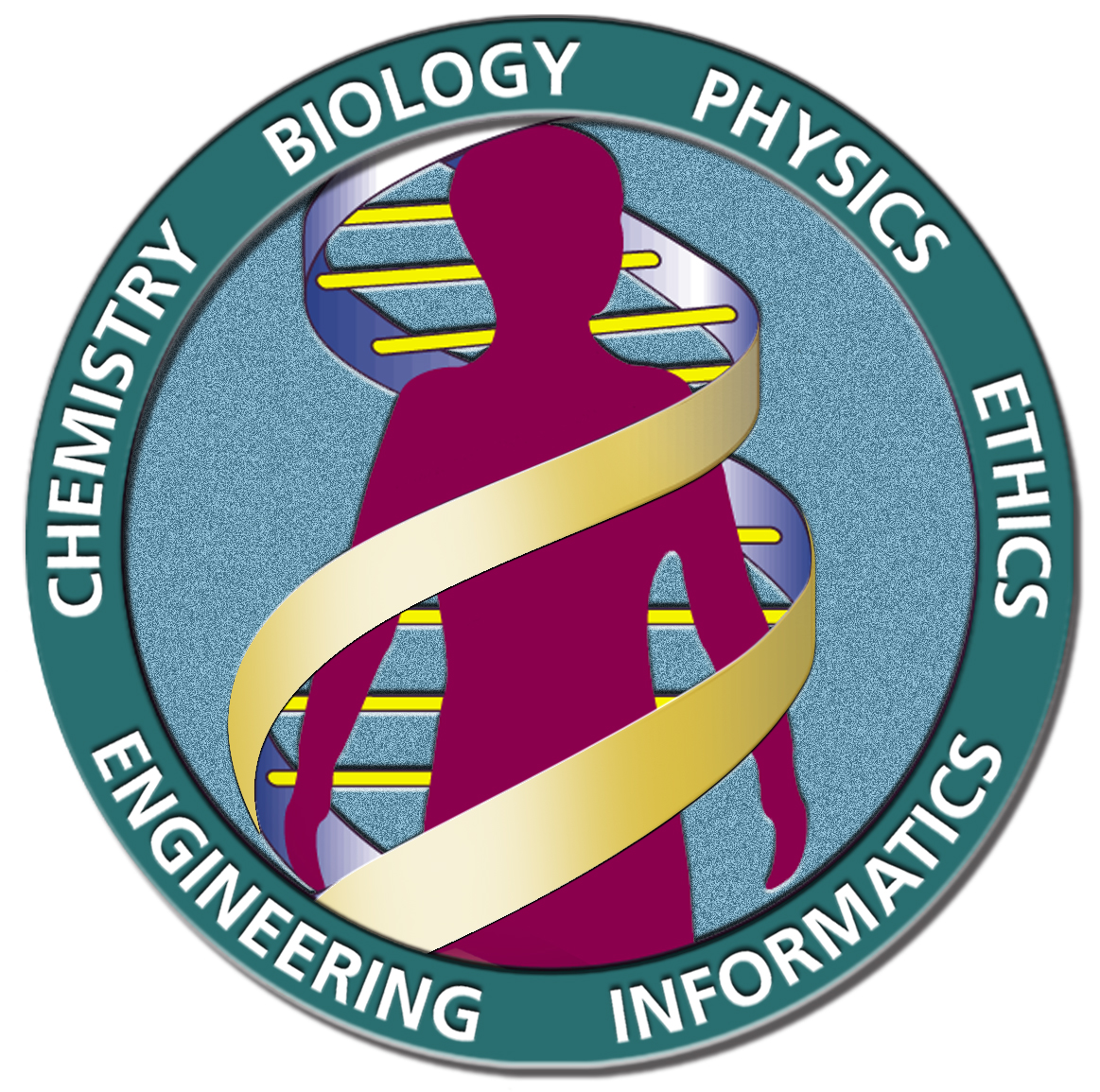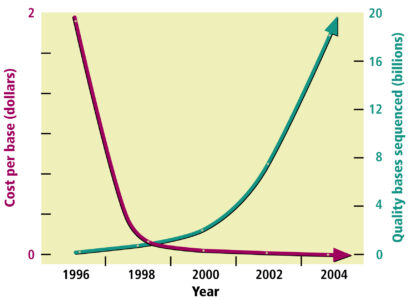HGP Research Area: Sequencing Technologies
Increasing throughput while reducing sequencing cost was a primary goal of the HGP. Solving this problem helped accelerate the completion of the HGP.
Although sequencing capacity was far greater in 1998 than at the inception of the HGP, achieving project sequencing goals required a two- to threefold improvement. Further incremental advances in sequencing technologies, efficiency, and cost were accomplished. For future sequencing applications, planners emphasize the importance of supporting novel technologies that may be 5 to 10 years in development.
Sequencing Technology Goals
- Continue to increase the throughput and reduce the cost of current sequencing technology.
- Support research on novel technologies that can lead to significant improvements in sequencing technology.
- Develop effective methods for the advanced development and introduction of new sequencing technologies into the sequencing process.
| Area | HGP Goal | Standard Achieved | Date Achieved |
|---|---|---|---|
| Capacity and Cost of Finished Sequence | Sequence 500 Mb/year at <$0.25 per finished base | Sequence >1,400 Mb/year at <$0.09 per finished base | November 2002 |
Text from F. Collins, Ari Patrinos, et al., “New Goals for the U.S. Human Genome Project: 1998–2003,” Science 282, 682–689 (1998). See HGP Goals for more details on the project’s goals.
Abstracts
- Sequencing, Sequencing Resources, and Sequencing Technologies abstracts from 2002 U.S. DOE Human Genome Program Contractor-Grantee Workshop IX
- Sequencing and Sequencing Technologies abstracts from 2000 U.S. DOE Human Genome Program Contractor-Grantee Workshop VIII
- Sequencing and Sequencing Technologies abstracts from 1999 U.S. DOE Human Genome Program Contractor-Grantee Workshop VII
- Sequencing and Sequencing Technologies abstracts from 1997 U.S. DOE Human Genome Program Contractor-Grantee Workshop VI
- Sequencing abstracts from U.S. DOE Human Genome 1997 Program Report
- Sequencing abstracts from 1996 U.S. DOE Human Genome Program Contractor-Grantee Workshop V
- Five Years of Progress in the U.S. Human Genome Project: Sequencing (December 1995)
- Instrumentation abstracts from 1994 DOE Human Genome Program Contractor-Grantee Workshop IV
- Abstracts from 1993 U.S. DOE Human Genome Program Contractor-Grantee Workshop III (see Subject Index for Instrumentation abstracts)
- Mapping Instrumentation abstracts from DOE Human Genome 1993 Program Report
- Sequencing Technology abstracts from DOE Human Genome 1993 Program Report
- Resource Development abstracts from DOE Human Genome 1993 Program Report
- Sequencing Technology abstracts from U.S. DOE Human Genome 1991-92 Program Report
- Resource Development abstracts from U.S. DOE Human Genome 1991-92 Program Report
- Instrumentation and related Speaker and Poster abstracts from 1991 U.S. DOE Human Genome Program Contractor-Grantee Workshop II
- Abstracts from U.S. DOE Human Genome 1989-90 Program Report
- Abstracts from 1989 U.S. DOE Human Genome Program Contractor-Grantee Workshop I

